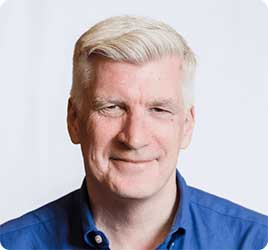Millions of freelancers and solopreneurs are skipping retirement planning, and the cost of overlooking it could ripple through the economy.

By Tim Cowart, Chief Financial Officer at Ubiquity – an innovator in small business retirement solutions
The freedom to work for yourself and build something meaningful on your own terms is one of the most empowering decisions a person can make–and the do-it-yourself-and-thrive mindset is reshaping the economy. Freelancers, solopreneurs, and small business owners now make up a growing share of the workforce, driving innovation across industries. But while independence is thriving, retirement readiness is falling behind.
In stepping away from traditional employment, self-employed workers also step away from the structured systems that managed things like retirement savings, and many haven’t found an alternative. And in the drive to build and grow, millions are overlooking one of the most critical pieces of long-term security. They’re risking their life-long comfortability and well-being because they’re not meeting their savings goals, not retiring on time (if at all), and not building a well-thought-out strategy for their financial future.
Self-employed workers may not think of themselves as part of a national retirement crisis, but the numbers are starting to tell a different story. According to Pew research, more than three-quarters of nontraditional workers have less than $10,000 in retirement savings, or none at all. Many don’t realize they’re behind until it’s too late to meaningfully catch up.
Unlike traditional employees, independent workers don’t benefit from automatic payroll deductions or employer-matched contributions. Saving for retirement requires a conscious effort, one that often loses out to more immediate needs or short-term reinvestments. In behavioral finance, it’s what’s referred to as hyperbolic discounting: when the reward feels too far off, it becomes easy to delay action. And without clear guidance or simple tools, that delay can quietly stretch into years.
But this isn’t just a personal finance problem. If this trend continues, it could become a national financial liability. Delayed retirements, reduced consumer spending, and increased pressure on public programs will have ripple effects across the economy in terms of job innovating and security and the overall financial health for future generations. For a country that depends on the creativity and output of its self-employed workforce, that’s a long-term risk we can’t afford to ignore.
If you’re self-employed and haven’t started saving for retirement, you’re not alone, and you’re not irrational. There are plenty of understandable reasons people put it off. But beneath those reasons are a few common assumptions that deserve a second look.
Recent legislation is beginning to reflect how people actually work today. The SECURE 2.0 Act and updates from the One Big Beautiful Bill Act (OBBBA) include changes that make it easier, and more rewarding, for small business owners and solo entrepreneurs to start saving for retirement.
Business owners can now qualify for up to $5,000 per year in tax credits just for starting a retirement plan. New rules expand eligibility to long-term part-time workers, support automatic enrollment features, and streamline compliance for small plans. The OBBBA also extends the Qualified Business Income (QBI) deduction and raises catch-up contribution limits starting in 2026, giving self-employed individuals more flexibility to accelerate savings over time and plan for long-term financial stability.
For those with high-deductible health plans, Health Savings Accounts (HSAs) remain a powerful but underutilized savings tool. Under OBBBA, more health plans, including certain Exchange-based options now qualify, making HSAs more accessible to entrepreneurs. Contributions are tax-deductible, earnings grow tax-free, and withdrawals for qualified medical expenses are untaxed. For those who can afford to let the balance grow, HSA funds can also serve as a long-term retirement buffer with no required distributions.
There are several plan options that offer real flexibility, depending on your income, structure, and growth trajectory.
The workforce is evolving, and our approach supporting the retirement of every type of worker must evolve with it. The freedom to work for yourself shouldn’t come at the cost of your financial future–and it doesn’t have to. With the right plan, self-employed Americans can save smart, build financial resilience, and rewrite what retirement looks like.

About the Author:
As Ubiquity’s CFO, Tim Cowart monitors and evaluates corporate financial strategy with an emphasis on long-term financial and operations planning, capital requirements, and enhancing shareholder value. Tim has 30 years of multi-industry experience leading finance teams, raising equity and debt capital, and performing corporate M&A. His experience includes cofounding a publicly traded European satellite communications company that grew to over $200 million in five years and serving as CFO to numerous venture backed companies in the San Francisco Bay Area. He holds a Bachelor of Science in Finance & Accounting from Menlo College and a Master of Business Administration from the University of Southern California.
In this episode, I sat down with Beejan Giga, Director | Partner and Caleb Emerson, Senior Results Manager at Carpedia International. We discussed the insights behind their recent Industry Today article, “Thinking Three Moves Ahead” and together we explored how manufacturers can plan more strategically, align with their suppliers, and build the operational discipline needed to support intentional, sustainable growth. It was a conversation packed with practical perspectives on navigating a fast-changing industry landscape.